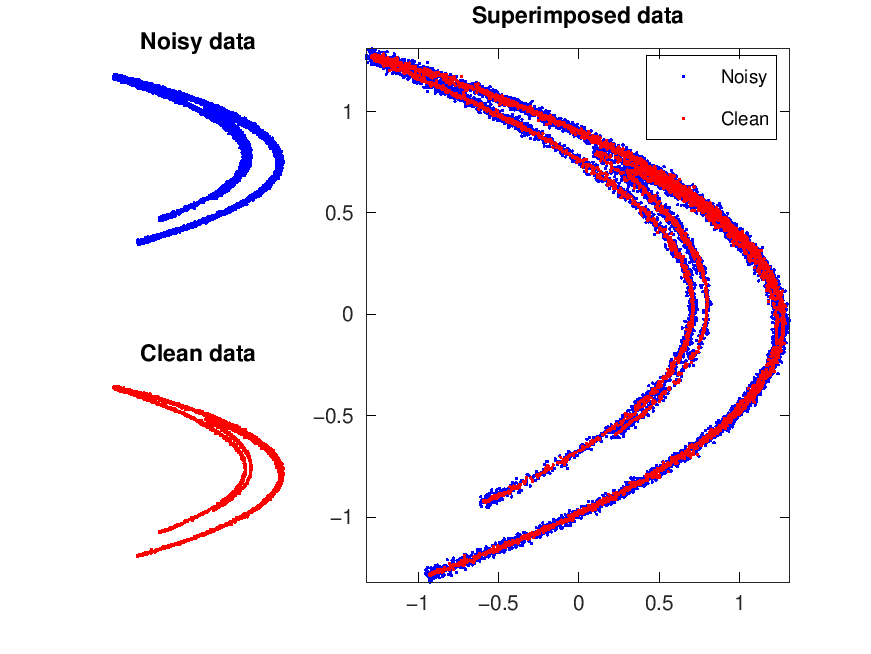- Function File:
cleaned =lazy(X, m, rv)¶ - Function File:
[cleaned, diff] =lazy(X, m, rv)¶ - Function File:
… =lazy(X, m, rv, imax)¶ -
Performs simple nonlinear noise reduction
Inputs
- X
Must be realvector. If it is a row vector then the output will be row vectors as well.
- m
Embedding dimension. Must be positive integer.
- rv
If rv > 0 then it is equal to the absolute radius of the neighbourhoods. If rv < 0 then its opposite (-rv) is equal to the fraction of standard deviation used. It cannot be equal 0.
- imax
The number of iterations [default = 1].
Output
- cleaned
Vector containing the cleaned data.
- diff
Difference between the clean and noisy data.
See the demo for example of how lazy works.
Algorithm
Uses TISEAN package lazy
Demonstration 1
The following code
hen = henon (10000);
"The following line is equvalent to 'addnoise -v0.02 hen' from TISEAN";
hen = hen + std (hen) * 0.02 .* (-6 + sum (rand ([size(hen), 12]), 3));
hendel = delay (hen(:,1));
henlaz = lazy (hen(:,1),7,-0.06,3);
henlaz = delay (henlaz);
subplot (2,3,1)
plot (hendel(:,1), hendel(:,2), 'b.','markersize', 3);
title ("Noisy data");
pbaspect ([1 1 1]);
axis tight
axis off
subplot (2,3,4)
plot (henlaz(:,1), henlaz(:,2),'r.','markersize', 3);
title ("Clean data");
pbaspect ([1 1 1]);
axis tight
axis off
subplot (2,3,[2 3 5 6])
plot (hendel(:,1), hendel(:,2), 'b.','markersize', 3,...
henlaz(:,1), henlaz(:,2),'r.','markersize', 3);
legend ("Noisy", "Clean");
title ("Superimposed data");
axis tight
Produces the following figure
| Figure 1 |
|---|
 |
Package: tisean